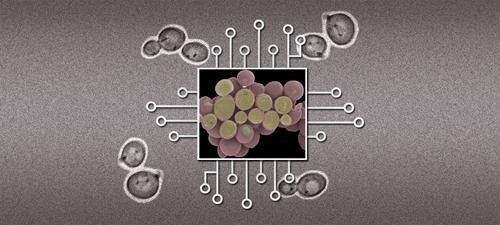
Posted on Tuesday, December 02 2014 @ 13:53 CET by Thomas De Maesschalck
EE Times
spreads news that biologists managed to grow living circuits by "wiring" naturally occurring cells into a circuit that performs a new function. The ultimate goal of the research is to create complex medical applications, such as ways to detect and combat cancer cells by injecting a circuit into a patient's bloodstream. Another potentially application is a biological circuit that measures glucose levels for diabetic patient and automatically releases insulin when necessary.
The design process for such biocircuitry is slow and arduous compared with designing electronic circuits. For one thing, the researchers are not using nerves for communication. Instead, they use the normal communication method inside a natural cell, with the "output" secreting a chemical that only affects the "input" cells that have receptors tailored to be activated by that particular chemical.
The second big slowdown is the mathematics used to model the desired circuits. The researchers cannot use simple R-L-C equations like Ohm's Law. They must use the tedious mathematics of differential equations. "Biological circuits are very nonlinear, so we have to use differential equations to model them," Del Vecchio said.
In the image below you can see a yeast cell (middle) wired together similar to how electronic circuitry is formed. The biological circuitry communicates not with electricity, but with chemicals that only plug into cells with the proper receptor.

